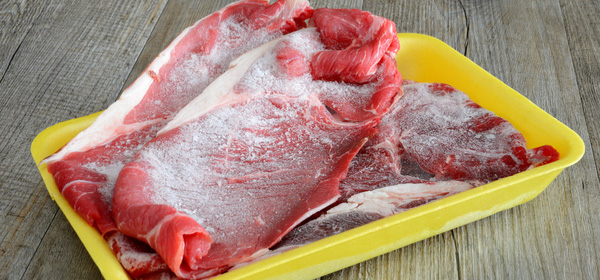Buying in bulk can save you big money, but the problem is how to eat all that food before it goes off. To safeguard your health, we show you how to properly freeze food and for how long, and how to thaw then reheat frozen food.
There are quite a few mistakes people make when freezing food, many of which may seem like no-brainers. The first is that they leave it too long before freezing.
If you’ve just cooked a big meal and want to freeze leftovers for later in the week (or month), then you should let it cool slightly before placing it in the freezer. If the leftovers are too hot, the temperature in your freezer will rise, meaning it will take longer for the food to freeze and could potentially thaw other foods.
Read more: Low-budget healthy eating tips
When you put home-cooked meals in the freezer, it’s a good idea to place a bit of tape on the container, with the date. Then, using the quick reference below, you can monitor your frozen goods and know what you can eat and by when.
To avoid freezer burn, make sure the food is properly wrapped and airtight. Freezer burn occurs when foods have been exposed to air during freezing. While you can still eat food that’s been affected by freezer burn, the taste and texture will be affected. It’s best to use airtight containers or zip-lock bags to protect your food.
Another good way to preserve the integrity of bought frozen food is to have an esky or cooler bag in the car. That way, your frozen food will stay frozen until you get home. Place frozen foods in the freezer as soon as you get home – don’t give them time to thaw.
Read more: How to shop smart and save
Use this chart as your guide to maximum freezing times for a wide range of foods.
Raw meat
- beef mince: three months
- beef steaks and roasts: six months
- lamb mince: three months
- lamb cutlets, chops and roasts: three to six months
- pork mince: two months
- pork chops and roasts: three to six months
- bacon, ham, prosciutto: one month
- sausages: three months
Raw poultry
- mince: three months
- chicken pieces: six months
- whole chickens: 12 months
- duck: three months
Raw seafood
- white fish fillets: six months
- salmon, trout or other oily fish: two months
- shellfish: two months
Cooked/prepared foods
- beef and lamb casseroles: three months
- pork casseroles: one month
- vegetarian casseroles: six months
- cooked and shelled prawns: one month
- cooked leftover meats: two months
- soups: four months
- fresh pasta: three months
Baked goods
- cakes: four months
- pancakes and crepes: two months
- bread: eight months
- pastries: eight months
- muffins: 12 months
- fruit cakes: 12 months
- pies: four months
Dairy products
- butter, salted: 12 months
- butter, unsalted: three months
- margarine: six months
- hard cheeses, such as cheddar: three months
Best ways to thaw food
Foods such as cakes, muffins, pastries and biscuits are ideally thawed at room temperature. To avoid food becoming soggy during thawing, make sure you remove food from packaging.
Foods with medium moisture content, such as pasta, sliced bread, frozen vegies or home-cooked meals, can be reheated from frozen. Freeze cooked meals in single serving sizes for faster thawing and reheating.
Read more: How to stretch your food budget
Any meat, fish, fruit and food with a high liquid content should be defrosted in the fridge to avoid bacteria growing during the thawing process. When thawing meat, ensure you leave it at least a full 24 hours (or longer) to allow ice crystals to fully break down. Also, place it on a plate to catch any juices.
When defrosting fruit, place in a single layer on a paper towel to absorb any liquid.
And here’s another money-saving tip: make sure your freezer is always well packed, because it takes less energy to cool and circulate the air that keeps your food frozen.
Do you have any freezing food tips for our members? Why not share them in the comments section below?

